A Review of the Jaguar E-Type.
Each major automotive industry has its own fair share of icons, but there’s always one car standing above the others. For Great Britain, it just has to be the Jaguar E-Type.
Its arrival at the sports car scene in 1961 left the world in awe. It was a perfect car for a perfect decade of decadence – free love and an all-out cultural revolution. Icon of the Swinging Sixties and a perfect antihero car, the Jaguar E-type was an instant classic.
But, the car was more than just a looker. Under the superficial visceral charm, the vehicle hid refined race-bred mechanics. The young and promising offspring of an honorable feline family, it was a street-going showcase of all Jaguar’s trackside accomplishments throughout the 1950s.
Now, it’s hard to measure just how much of an impact the vehicle made in its golden years, but it’s safe to say that it changed luxurious sports cars forever.
Most importantly, the car wasn’t esoteric, low-volume, and unobtainable. As far as high-performance European exotics go, it was a people’s car, built in the tens of thousands.
Iconic as it is, the vehicle needs no special introduction, but its origin story and various accomplishments in the automotive world do. That being said, here’s everything you should know about the E-Type or the XK-E.
Background
In its post-WW2 era, Jaguar was struggling with steel shortages and luxury wasn’t Europe’s top priority, yet the company managed to survive and thrive further.
The first step towards new beginnings was a much-needed name change. In March 1945, Sir William Lyons and shareholders changed the eerily unfitting S. S. Cars Ltd. to a more optimistic Jaguar, after a SS 2½ Litre Saloon, the first car to bear the feline name.
The leaping cat soon found its place on the radiator grille of the Mark V, a post-war version of the SS 2½.


Together with William Lyons, chief engineer William Heynes, Walter Hassan and Claude Baily constructed the XK engine, a novel dual overhead cam cast iron straight-six which soon turned into the companies backbone powerplant.
A new car followed the new engine design to utilize its full potential. In 1948, the XK120 was introduced, a swooping sports car designed by William Heynes.

Thanks to the XK engine and an aerodynamic silhouette, the XK120 became the first production car to reach the speeds of 120 MPH, an incredible feat for the late 1940s.
Aiming the XK120 towards the upscale North American market, the marque delivered the first production drophead coupé to Hollywood superstar Clark Gable.
With the production car goals set and met, they were quick to reposition themselves as the leading force in motorsports, in part due to the company’s wartime involvement in aircraft fabrication.
The XK120’s 1950 Le Mans effort gave Jaguar a general idea on how to win at the most famous endurance race in the world. In short, it was lightness and aerodynamics.

A year later, in 1951, came the Jaguar C-Type, winning the 24-hour race in its debut and again in 1953. With the 1953 vehicle, the company employed knowledge from the aeronautic industry, equipping it with disc brakes jointly developed by Dunlop. This simple, yet effective solution was used on aircraft, and thanks to Jaguar, it found its way into the automotive industry.
The vehicles successor was named the D-Type, and it was a further evolution of the two-time Le Mans winner. The new car went even further with a sheet alloy monocoque chassis.
The 1954 Le Mans debut didn’t go as planned for the D-Type despite being superior speeds, and neither did 1955, where Jaguar’s Le Mans triumph was overshadowed by motorsports’ most tragic accident.

In 1956, a privately-owned Ecurie Ecosse D-Type won the Le Mans, followed by all-out domination in 1957, when five privateers of the vehicles won first four and sixth place at the famous event.
The same year, a fire at its Brown Lane factory in Coventry, UK, destroyed a significant share of a planned limited run of the XKSS, a road-legal version of the D-Type aimed at the American market.
Playing a key role on the C and D-Type and the XKSS was Malcolm Sayer, an aerodynamicist who joined Jaguar after his wartime efforts for Bristol Aeroplane Company.

By employing his aeronautical know-how on automobiles, Sayer made a huge leap for their racing program. Still, with the era of D-Type’s dominance ending due to Le Mans rulebook changes for 1958, it became clear that the new car was bound to be created.
Jaguar E-Type Development
In 1956, the racing department began working on a project meant to replace the aging racing cars such as the Le Mans-winning D-Type and the dated roadgoing XK140 flagship, a car based on the 1940s XK120.
The first prototype of a new, more modern car saw the light of day in 1957, and it was named E1A.


This experimental roadster was the first mule of an upcoming race car and having said that, it featured a monocoque chassis with fully independent suspension, an aluminum alloy body with no headlights and a 2.4-liter XK six-cylinder. This prototype was extensively tested by Norman Dewis, Ted Brookes, and Mike Hawthorn and finally scrapped.
The next E2A prototype was envisioned as a competition car with a steel monocoque chassis, an aluminum body and a 3.0-liter XK with a 5-speed gearbox.
The E2A was completed in 1960, just in time for the Le Mans, a high-stake testing ground for the newly developed independent rear suspension.



The prototype was lent to Briggs Cunningham, who competed with Dan Gurney and Walt Hangsen behind the wheel. The E2A didn’t finish the race, but Cunningham persuaded Jaguar to give the car a 3.8-liter, so his team could campaign it in the United States. Across the Atlantic, the E2A had minor success, and in return, the companies engineers had the know-how to resume development.
As a result of experience gathered from the E1A and E2A concepts, the production car was devised as a steel monocoque central section with a tubular steel front subframe. This construction method enabled the vehicle to be 198 lb lighter than the XK150, which it replaced.

The car famously featured an all-round independent suspension. The front suspension was derived from the XK150, the final evolution of the XK120 sports car.
It comprised a single wishbone and a lower torsion bar, while the rear had transverse lower links, fixed-length driveshafts, and dual coil springs with Koni shock absorbers. Anti-roll bars were fitted both front and rear.

The vehicle had rack and pinion steering, and it was one of the rare road cars fitted with four power-assisted disc brakes.
Yet, unlike the outbound rear brake setup seen on the D-Type and the XK150, the rear brakes were inbound, placed on each side of the differential housing.


This construction placed the differential, brakes, and rear suspension into a single bolt-on frame and made the vehicle impractical as a racing car where work on the brakes was essential in the pits.
The 15x5K front and 15x5K½ rear wheels were equipped with 6.40×15 Dunlop RS5 and 6.50×15 Dunlop Racing R5, while the Series 1 had 185/15/SP41 Dunlops or 185/VR15 Pirelli Cinturato radials.

Jaguar E-Type: The Grand Debut
The Jaguar E-Type debuted at the 1961 Geneva Motor Show as a Fixed Head Coupé, where it almost failed to show up as the displayed example was on press testing in the UK.



Thanks to Jaguar’s PR Bob Berry, who heroically drove the 9600 HP prototype from Coventry to Geneva, they made it to the fairground stand, less than half an hour before the scheduled unveiling ceremony.
Unsurprisingly, the car raked in all imaginable accolades, including a significant one coming from Maranello.
Enzo Ferrari hailed Malcolm Sayer’s final Jaguar E-Type design as the most beautiful car in the world. Looking back, knowing how relentlessly competitive Enzo was, this praise towards the competition means a lot today.
The demand for test driving the car was so big that Sir William Lyons employed the legendary test driver Norman Dewis to bring in another car, a roadster wearing number plates 77 RW. The late Dewis drove for eleven hours, 68 MPH, with no motorways between Dover and Geneva.

With such a stellar debut, the marque gave birth to yet another legendary cool cat. Between 1961 and 1974, the vehicle ran in three distinct and one transitional series and sold in around 70,000 examples, roughly 24,000 of them being roadsters.
That’s an impressive number for a technologically advanced European sports car, but unsurprising given that most E-Types were XK-Es or North American imports.
Jaguar E-Type Series 1
Initially, all this beauty served one purpose: going fast, race car style. The first five hundred Series 1 cars had flat floor panels, which were later designed to be more conventional and road-friendly by offering more legroom.

At first, the Series 1 vehicles were powered by a 3.8-liter XK straight-6 with triple SU HD8 carburetors and a 4-speed Moss gearbox with synchromesh on all gears but the first.

Starting from late 1964, they replaced the XK150-sourced 3.8-liter with a new, 4.2-liter XK and a new all-synchromesh 4-speed transmission unit. The power output remained the same, at 265 horsepower, but the 4.2 vehicle had more torque, 283 lb-ft than 240 lb-ft from the early 3.8 variants.
Beefed-up torque meant that peak power could be achieved at 5,400 RPM, 100 RPM lower than the 3.8, while the top speed of 150 MPH and an impressive 0-60 MPH sprint of 6.4 took roughly the same on both cars.
The 4.2 Series 1 saw more comfortable, touring-friendly interior, better brakes and electrics and an alternator instead of a dynamo.


A new body style came in 1966, and it was a 2+2 version featuring a higher roofline and, more importantly, a wheelbase increased from 96 to 105 inches. As a proper grand touring car, the Jaguar E-Type 2+2 got an option of a 3-speed automatic Borg-Warner
The easy way to spot a Series 1 is its closed headlights. For better illumination and to meet safety demands from the lucrative American market, the car saw the first major changes to its front fascia with removed headlight covers and altered housings. This subtle change was an intro to the transitional series of cars colloquially named the Series 1 ½.

The transitional Series 1 ½ was produced between 1967 and 1968 and these cars had chassis numbers starting with 1E, just like the Series I 4.2. In addition to exposed headlights, other changes including some cars having plastic rocker switches replacing aircraft-style toggle switches.

For the American market, the vehicle was delivered with safer hexagonal knock-off nuts that replaced winged knock-offs.
From a mechanical standpoint, the Series 1 ½’s XK engine got a different finish on camshaft covers and twin cooling. In contrast, North American exports got dual Zenith-Stromberg CD175 carbs replacing the triple-SU setup.

As a result, the power output was reduced from 265 hp and 283 lb-ft of torque to 246 horsepower and 263 lb-ft.
Jaguar E-Type Series 2
The Series 2 vehicle started selling in 1968, incorporating more extensive changes adding to the safety-related alterations seen on the Series 1 ½.

The redesigned car got a bigger elliptical grille opening, making better use of the new twin cooling system.
It also got larger side indicators moved under the front bumper, while the rear lights were also relocated underneath the newly designed wraparound chrome bumper.

For added comfort and ease of use, the Series 2 had optional air conditioning and power steering.
The wire wheels were now wrapped in novel Dunlop SP Sport CB73 radial rubber, a novel design in the automotive industry.

Jaguar E-Type Series 3
The final car waved goodbye to its sportscar roots in 1971 with the introduction of the Series 3.
By discontinuing the XK straight-six and two-seater Fixed Head Coupé body style in favor of a 2+2, they made the car a grand touring car.

Moreover, both the roadster and the 2+2 FHC had a 105-inch wheelbase, more suited for touring and cruising than spirited driving.
To further underline the transformation into a flagship tourer, power steering became a standard feature of the Series 3.
Still, the Series 3 was no slouch as the 5.3-liter V12 came from their racing program, being a derivative of the engine intended for the stillborn XJ13. Equipped with four side-draft Zenith-Stromberg CD175 carburetors, this V12 produced around 270 horsepower and 399 lb-ft of torque. The powerhouse was mated to a four-speed manual or optional 3-speed automatic transmission,

To handle more power and increased the weight of the V12-bearing front-mid section, they upgraded the brakes to bigger discs.
As the car was primarily a United States export, it also got 5 MPH bumpers starting from 1973 when it got just the frontal and rear in 1974.

The Series 3 can be easily distinguishable for its slatted front grille design, wider wheel arches to accommodate wheels equipped with Dunlop Sport 70VR15 tires, twin-tipped exhausts and, of course, the V12 badge on the trunk.

E-Type: An icon
Seemingly every A-list British celebrity had an E-Type, from the first soccer superstar George Best to the quiet Beatle George Harrison, who famously had a record player installed in his coupé.
Fast car aficionado Peter Sellers resisted the car’s allure, but he gifted one to his then-wife Britt Ekland anyway. Finally, the king of flamboyance and an avid British car collector Elton John had a red Series 1 4.2 roadster.
Across the pond, where the car was better known as the XK-E, it was Frank Sinatra who first declared his love for the most beautiful car of 1961 and beyond. After the Ol’ Blue Eyes, Roy Orbison, Nat King Cole, Tony Curtis, and Tina Turner couldn’t resist the XK-E’s overpowering charm.
As a classic, the vehicle garnered even more celebrity endorsements from established collectors like Jerry Seinfeld and Jay Leno, young rockstars like Harry Styles and the freshest royal couple, Prince Harry and Meghan Markle who drove off together in an electric E-Type on their wedding day.
E-Type in the Movies
The car had quite a big share of screen time, although it was rarely remembered as an iconic movie car, unlike the DB5 for example.

Some of its roles were archetypal, like in the 1968 flick ‘How To Steal a Million’ featuring Peter O’Toole and Audrey Hepburn, or the Blues Brothers where Twiggy drove it. On the other hand, some of them were quite ironic, cue Harold and Maude E-Type Hearse and Union Jack-clad vehicle in Austin Powers.

On the silver screen, the car was even countercultural and subversive. Richard C. Sarafian’s 1971 classic Vanishing Point features a heated race between Kowalski in his white Challenger with an open-top E-Type.
As an anti-hero hero car, a black Series 1 E-Type FHC had a prominent role in a pulp comic-book-turned-movie Diabolik, where it was the titular character’s preferred set of wheels. As of now, the 1968 flick Danger: Diabolik is to receive a remake in 2021.
A Work of Art
Finally, Malcolm Sayer’s design was recognized as an actual work of art and permanently displayed at the MoMA in New York.

The Series 1 3.8 Roadster was the third car to enter the prestigious museum’s collection where it resides to this day as an integral part of the exhibition named AUTObodies: speed, sport, transport.
Racing for Success
Even though the car was conceived as a race car initially, its instant market success was so big that the marque didn’t feel a particular need to market it on the tracks. Still, several vehicles did compete in both major and minor events, some of them piloted by legendary racing drivers.
The first pair of vehicles that ever raced was driven at Oulton Park by Graham Hill and Roy Salvadori. The future Formula One championship drove his Jag to victory over an Aston Martin DB4. The car continued its triumphant streak on tracks like Silverstone, Brands Hatch, and Goodwood, courtesy of Mike Parks and Bruce McLaren.
On the European scene, though, the vehicle couldn’t outrun the Ferraris, finishing second at Spa-Francorchamps in 1961. In 1962, Briggs Cunningham and Roy Salvadori entered 24 Hours of Le Mans, finishing fourth, behind a trio of Ferraris.
1962 Jaguar E-Type Low Drag Coupé
This result motivated the company to develop the vehicle further and keep its name alive on international tracks.
The first effort was the Jaguar E-Type Low Drag Coupe. Malcolm Sayer redesigned the silhouette for better aerodynamic efficiency while also using thinner steel, unique aluminum panels, and perspex glass to shed weight.

On top of it all, the power was up to 350 horsepower, giving the Low Drag Coupé the edge on the tracks. The car was registered as CUT 7 and was raced by Dick Protheroe.
The gentleman racer had three vehicles wearing the CUT 7 plates, the first one scoring considerable success in the UK.
In contrast, the second one was less fortunate, crashing on its debut at Snetterton in 1963. The third and final CUT 7 car later wore the most extremely modified body with bulging rear arches and a staggered stance.

1963 Jaguar E-Type Lightweight
The next series of race-prepped vehicles was the E-Type Lightweight. Featuring a roadster-style body with a hardtop roof, this car had an all-aluminum bodywork for an even greater weight cut, 250 lb less than the stock car.
The vehicle also featured an all-aluminum version of the 3.8-liter XK engine with triple Weber 45DCOE carbs.


A total of twelve Lightweights were constructed out of a planned run of 18.
Two of these lightweight roadsters were converted to coupés: the Lumsden-Sargent Long Nose by Dr. Samir Klat and Frank Costin and Linder Knöcker Low Drag.
In 2014, a continuation model of this car was offered for a cool seven-figure sum. These cars were built on unused chassis codes under the exact 1963 spec.
When it comes to its racing prowess, the vehicle had its debut at the 1963 Sebring 12 Hours, where Ed Leslie and Frank Morrill drove it to a class victory and ninth place overall.
Despite the car being successful on shorter and twistier circuits with Graham Hill behind the wheel, they lost their ground on longer tracks where the car couldn’t achieve speeds to outrun Ferrari. At the 1963 Le Mans, Briggs Cunningham’s vehicle had to settle for ninth overall, a far cry from the D-Type’s era of dominance.

In 1964, the team principal John Coombs enlisted a promising Scott Jackie Stewart to race the reworked car, and he famously drove it to victory at Brands Hatch.
Linder Knöcker Low Drag
The only E-Type Lightweight given an in-house makeover into a fully closed body was a car wearing 4868 WK plates, which the Experimental Department built for a German Jaguar dealer and racer Peter Lindner.

Malcolm Sayer completely reworked the bodywork into a slippery all-aluminum coupé silhouette with meticulously riveted panels. This silver fuselage-like fastback stands among the most valuable historic cars today.
Before modifying it into a coupé, Lindner drove this car as a roadster alongside Peter Nöcker, at the 1963 Nürburgring 1000 km, where the car led the race until unfortunately retiring due to losing oil pressure.
In 1964, Sayer remodeled the Lindner-Nöcker E-Type into the shape we know today, in time for the 1964 Nürburgring 1000 km race. This time, it was the gearbox that gave out.
Lindner and Nöcker had their eyes set for the Le Mans when the car’s 3.8-liter powerplant was further upgraded to keep up with Ferrari on the Mulsanne straight, but a blown head gasket crushed Lindner’s hopes for success.
Just a few weeks later, Lindner lost his life in the very same car at Linas-Montlhéry. The mangled car was thought lost for decades and meticulously restored to former glory using original body panels in 2011.
Racin’ USA
A large torquey V12 engine of the Series 3 XK-E found its use in the SCCA championship where Lee Mueller and Bob Tullius successfully campaigned an XK-E roadster as a Group 44 team. The team had notable success, triumphing at the SCCA Production Sports Car racing class in 1975.

Interestingly enough, one 4.2-liter straight-six powered 1966 XK-E won the 1980 SCCA C-Production Class National Championship in the hands of Freddy Baker and Lou Fidanza’s Ohio-based Gran-Turismo racing team.
Well beyond its prime both as a road and a race car, the Ole 19 XK-E roadster won the 1980 Champion Spark Plug Road Racing Classic at Road America, taking a class win for the 1980 season. This result was a Herculean feat given the fact that Freddy Baker beat Paul Newman and his factory-backed Datsun 280 ZX.
Upon finishing the season at second best, Newman commented: “As long as his engine lived, we didn’t have a chance.” Gloating in victory, Fidanza famously said: “The E-Type Jaguar was the best sports car ever designed and constructed in major quantities, including the best late stuff from Germany and Japan. It took us until 1980 to prove it.”
Legacy
Exactly ten years after celebrating its golden jubilee, the Jaguar E-Type is as relevant as ever. In an era where fresh classic cars from the 1980s and the 1990s are outperforming its aging predecessors from, the superiority of the car is a testament to its everlasting appeal.

After the gorgeous car wrapped up, its successor was an ugly duckling, one that somehow didn’t turn into a beautiful swan as of yet. In all honesty, rarely any car could actually be better than the Jaguar E-Type, no matter how beautiful it was.
The vehicle’s uncompromised cult status is further validated by continuation models and reimagined visions like the phenomenal Eagle Speedster, E-Type Zero, Lightweight continuations, and the E-Type Reborn program.
An inherently iconic sports car, the Jaguar E-Type has entered the collective consciousness, and it’s there to stay for decades to come, as fresh and beautiful as it was back in 1961.


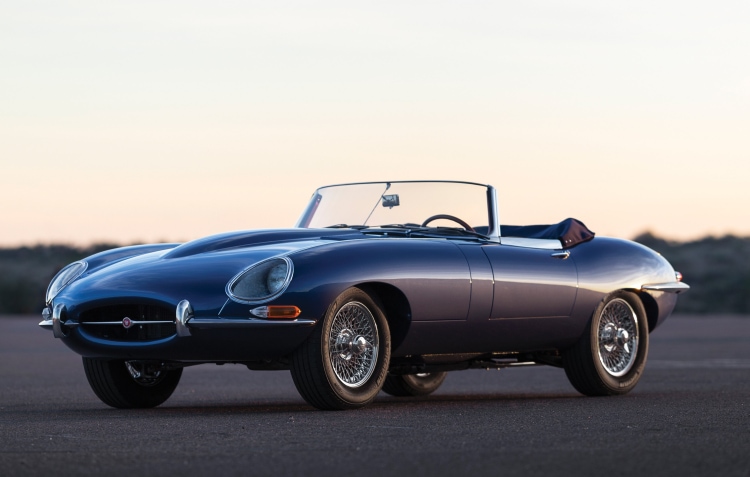

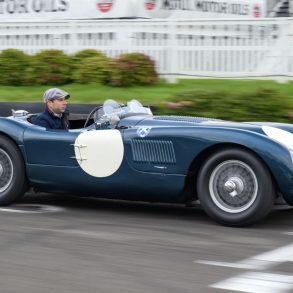
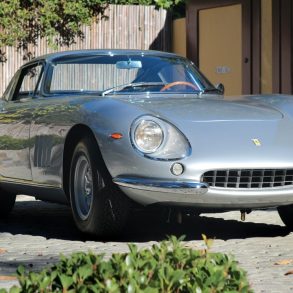
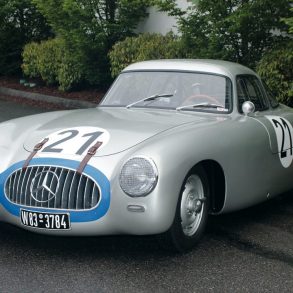

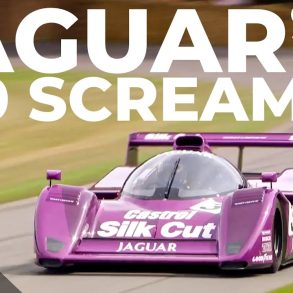


Yet another wonderful article written about the most beautiful car ever to grace the surface of our planet!
For me, the E-type incapsulates all that was great about British engineering, sixties culture, sex, love and rock n roll!
I am so blessed to now possess my childhood fantasy, a series one 3.8 roadster… red of course! After seeing the Italian Job, I craved a red E-Type, yes the DB4 was a “pretty car” , but the E was drop dead gorgeous!
Even by modern standards, the E-Type is still so much more attractive. Yes I will acknowledge that the ugly sharp bold lines on a modern day Maclaren or Ferrari are there for aero performance, but for me a shape should flow and the E-types lines flow like champagne from Heaven! Dare I be so bold as to say like a beautiful woman’s curves!
I bet if you asked anyone over the age of a Acne to name their most favourite car design.. the majority would say the Jaguar E-Type, its just so recognisable, so iconic, so adorable!
Yes for me a visit to the Jaguar showroom with my girl friend and now my wife. In Bournemouth at the age of 18 and to be asked to leave by the salesman was not so nice. I wish he was here today and I would open my garage door and show him my 1967 series 1/5 fixed head2 plus 2 in old English white with red leather and red wilton carpets. I have owned my car since I was 36 and I’m now 71..Very honoured to have owned one.
Going 100% electric in a few years – while Land Rover will remain at least hybrid – is an act of high treason to an iconic brand.
I received my Jag revelation at a petrol station when the driver of an aubergine E-Type Series 1 cabrio opened the bonnet. I was 10 and had never seen such mechanical jewellery.
When I see on classic meetings how today’s 10-years old are enthralled at the looks and sound of cars built before their own parents were born, I can’t believe that fully electric cars will fascinate the next generation at all.
I’ll take good care of my F-Type.
After only fifteen years of being involved with Jaguar Cars I am happy to have learned so much of the great history and feel this is why I chose my first, second third and fourth Jaguar.
I have somehow and happily joined the many fine members of the “Jaguar Associates Group” JAG, in absorbing more and more Jaguar information, maintaining classic and new-era Jaguar Cars and enjoying the heritage and beauty they bring.
Mine is a series two FHC which I restored and converted from LHD to RHD eighteen years ago. Just to look at it parked in the garage brings a smile to my face – superb design and engineering. I will be taking it out on a club run tomorrow. I have had nine Jaguars and my daily driver is a late model XF, I am happily biased.
The beauty of the Malcolm Sayer design of the Jaguar E-type body is indeed be loved by many people around the world. Only a little people know, that the E-Type engine is designed by Reginald Walter Maudsley, who founded in 1903 The Standard Motor Company in Coventry UK and became the number one premium car maker in the UK between WW1 and 2..
Standard purchased in 1945 the Triumph brand and changed its name to Standard Triumph. During the war, in 1942, Sir John Black, from 1929 the CEO of Standard offered all the machine tools of the Standard Twelve engine for sale, and sold them to the severe and only one interested: William Lyons. Which he already regrets very hard, after realising what he had done.
Lyons had purchased from the beginning of the SS1 and SS2, complete rolling chassis from Standard, including engine, gearbox, front and rear axle. Since he was realy only a coachbuilder he had no knowledge of chassis, engines, gearboxes and wheel suspension. Because he wanted more power from the Standard Twelve engine he asked Harry Weslake to design a overhead valve conversion of this site valve engine, because it was not capable of realising the 100 mph, for which the later SS100 was standing for and made by Standard for Swallow. So the letters SS where then realy standing for Standard Swallow by the habit of those days.
After WW2 Hassan and Heynes experimented with the Standard engine but could not found a way other then to realy improved the 2.663 cc Standard engine than to changed the cilinderhead in to a Double Over Head Cam valve construction. Standard offered the engine then to SS with two strokes, 106 mm and 110 mm for the SS90, B x S of 73 x 106 mm and 82 x 106 mm fo the SS100 and Hassan and Heynes settled for the 106 mm stroke engine.
The 106 mm stroke engine appeared first in the Jaguar XK120 with the 82 mm bore and 3.442cc displacement in 1948. Later in the Xk120C with the C for competion or C-Type and fynaly in the Jaguar E-Type. To enlarge the capacity of the engine further they only have to enlarge the bore by the Standard stroke of 106 mm to a bore of 87 mm, wich provided 3.781 cc or 3.8 liter. Followed by a bore of 92 mm which provided a displacement of 4.235 cc or 4.2 liter.
Hi there again. Sorry for being a bit hasty but also the letters are rather small when typing. From here it should read as follows:
Standard offered the engine by then to SS with two strokes, 106 mm and 110 mm.
For the SS90 with a B x S of 73 mm x 106 mm and for the SS100 ‘2.5’ liter also with 73 x 106 mm, both with a displacement of 2.663 cc. For the SS100 3.5 liter the B x S was 82 mm x 110 mm and with 3.485 cc displacement. Hassan end Heynes settled after a lot of testing with four cilinder engines in the end for the Standard six-in-line engine with 106 mm stroke.
The 106 mm stroke engine appeared first in the Jaguar XK120 with the 82 mm bore and 3.442 cc displacement in 1948. And later in the XK120C with the C for competion or C-Type and finaly in the Jaguar D- and E-Type.
Etcetera.